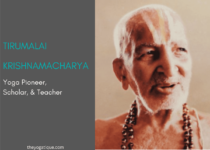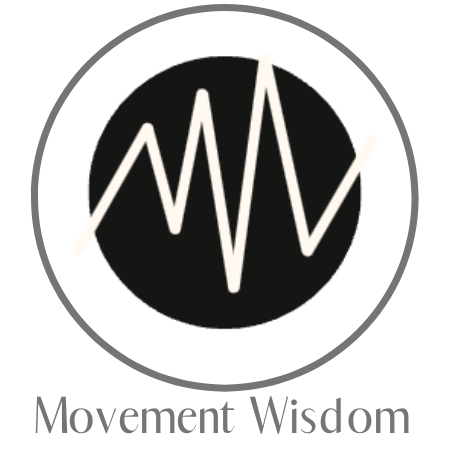Sri Tirumalai Krishnamacharya was a renowned yoga guru who spread the wisdom of yoga in the Western World. He is known as the “Father of Modern Yoga” as he dedicated his entire life to the practice of and sharing of yoga.
Krinshnamacharya was an Ayurvedic healer, scholar, and iconic yoga teacher. I remember learning of him in my 200-hour yoga teacher training. I was in awe of how Krishnamacharya revolutionized yoga and made it accessible to all.
He believed that your practice was distinctly yours as each individual is unique. This remains true in some forms of yoga that were influenced by his teachings. They include Ashtanga Yoga, Iyengar Yoga, and Vinyasa Yoga. Let's explore how the “Yoga Master” shared a secret practice as a gift for all of humankind.
Article content:
(Click any link below to jump directly to section)
Early life and education of Krishnamacharya
Yoga philosophy and teaching style
Further studying of Hatha & other styles
Mentoring Indra Devi
Teaching B.K.S. Iyengar
K. Pattabhi Jois twenty years studying under Krishnamacharya
Controversies and criticisms of the Indian teacher
Legacy and influence
Takeaway on Tirumalai Krishnamacharya

THE YOGA TEACHER TRAINING
YOU'VE BEEN LOOKING FOR.
Online Yoga Teacher Training Offers
- Affordability
- Flexibility
- Certification
- Lifetime access
⬇Click below to discover the best Yoga Alliance registered online yoga certifications enrolling now⬇
Early life and education of Krishnamacharya
Sri Tirumalai Krishnamacharya was born on November 18, 1888 in South India. He was born into a family lineage of Brahmins in the Mysore Kingdom and he is a descendant of Yoga Rahasya.
Krishnamacharya was always a bright scholar, even invited to teach at the Sanskrit college later in life. His father was his first teacher in Vedic philosophy. At the early age of five, Krishnamacharya learned how to speak and write Sanskrit. He also learned Vedic chanting (Ancient Hindu Scriptures).
Krishnamacharya’s father emphasized the healing properties of yoga. Krishamacharya learned from him the therapeutic aspects of asana. He also learned how to incorporate the practice of pranayama (Focus of Breath).
He went on to complete many scholastic degrees and certifications. They include Ayurveda, Sanskrit, and each of the Six Yoga Darshana (Hindu Philosophy).
Rediscovering yoga
Krishnamacharya was a student at heart and wanted to further his studies. He sought to study under the great yoga guru Sri Ramamohan Brahmachari. Brahmachari was one of the very few yogi gurus who existed.
In the 19th century, the British Raj reigned over India. Many Indian traditions, such as Yoga, were opposed. Brahmachari went to live in the Himalayan Mountains of Tibet. There, he could preserve the ancient practice.
During this time, Indian culture was being ruled by Western methods. Krishnamacharya decided to venture off for 2.5 months. He traveled on foot through the Himalayas.
After months of travel, Krishnamacharya found Brahmachari living in a cave at the foot of Mount Kailash. Brahmachari was living in the cave with his wife and three children. He agreed to welcome Krishnamacharya into his home and take him as a student.
Krishnamacharya studied under Brahmachari for seven years. Together, they studied many sacred texts that included the Yoga Sutras of Patanjali and yoga korunta. Krishnamacharya studied the therapeutic aspects of yoga, learned thousands of asanas (Yoga Postures) and pranayama, and managed to memorize the Yoga Korunta (Mythical Ancient Yogic Text).
After seven years together, Krishnamacharya’s studies came to an end. It is yoga tradition that once a student completes their tutelage, they offer their teacher a gift. Krishnamacharya did not have a gift for Brahmachari, nor did he want to leave.
Sri Ramamohan Brahmachari encouraged Krishnamacharya to move on. He said that the greatest gift would be for Krishamacharya to integrate back into society, become a householder, marry, have children, and teach yoga. Krishmacharya did exactly as his teacher asked.
Yoga philosophy and teaching style
In 1926, the Maharaja of Mysore fell ill. He had heard many things about Krishnamacharya and his healing abilities through yoga. He immediately contacted Krishnamacharya and brought him to Mysore.
Kirshnamacharya was able to heal the Maharaja. To show his gratitude, the Maharaja dedicated a space to Krishnamacharya to teach yoga within the Mysore Palace. Krishnamacharya served the Maharaja as a yoga teacher, friend, and trusted adviser.
Krishnamacharya taught yoga to thousands of students at his yogashala (Independent Yoga School) and at the Krishnamacharya Yoga Mandiram, which also offers education for those wishing to become a yoga therapist. During his time there, he revived Hatha Yoga. He also combined breath and movement (the seed of Vinyasa–my personal favorite).
Krishnamacharya’s teachings are based on the “Yoga Sutras of Patanjali” and the “Yoga Yajnavalkya.” Krishnamacharya’s yoga became known as Viniyoga. He believed that every individual would walk a different path of yoga.
The principle of Viniyoga is to “teach what is appropriate to the individual.” Viniyoga recognizes that the practice of yoga means different things to different people.
Krishnamacharya took the tools of yoga and adapted them to the needs, abilities, and goals of each individual. With asana, diet, pranayama, and meditation, he took an individual approach to what is Viniyoga.
Further studying of Hatha & other styles
Krishnamacharya stressed that the objective of practice is physical health and spiritual growth. Therefore, he contributed to the continuance of Hatha Yoga. In doing so, he left his imprint on postural yoga. He did this with innovative sequencing and linking breath to movement.
The foundation of his teachings was based on the ability to recognize the student as an individual. He would then develop a practice around what the student needed. His style of Viniyoga saw students unique from one another.
Various styles of yoga have been influenced by Viniyoga. Ashtanga Yoga is a powerful and dynamic set of sequences that a student will develop on their own time. Iyengar Yoga focuses on the alignment of classical postures using a range of props to support the student.
Vinyasa is a faster form of Hatha Yoga that coordinates breath to movement. The sequences of postures vary from practice to practice, depending on the teacher. They are all distinct forms of yoga instruction but all the same at the core.
⬇Yoga Alliance registered yoga teacher trainings you should look into⬇
Mentoring Indra Devi
Krishnamacharya refused to teach Indra Devi for being a woman and a westerner. However, Devi was relentless. With the intervention of the Maharaja, Krishnamacharya was instructed to take Devi in as a student.
He agreed, but not without challenging Devi. He obliged her to a strict schedule of long practice hours and a restrictive vegetarian diet.
He was surprised by her dedication and with how she met every challenge. She managed to gain his respect and was later known as the “Mother or Yoga.”
Indra Devi became known as the “Mother of Western Yoga.” She studied alongside Krishnamacharya for 8 months. She was dedicated to the study of asana and pranayama. She left a lasting impression on Krishnamacharya.
With a new perspective, Krishnamacharya claimed that “Women are the future in yoga and for yoga in the West.” He later asked Devi to spread the yoga teachings wherever she went.
Teaching B.K.S. Iyengar
Krishnamacharya also had a very intense and brief tenure with his student B.K.S. Iyengar. Their time together barely lasted a year. Krishnamacharya felt the stiff young Iyengar would never achieve any success in yoga. Therefore, he barely taught Iyengar.
Days before an important demonstration at his yogashala, his star pupil disappeared. With no one to perform the asanas, he quickly began to Iyengar.
Krishnamacharya was known to be a harsh taskmaster. He tasked Iyengar with performing difficult asanas. Iyengar was diligent in his practice. He surprised Krishnamacharya by performing exceptionally on the day of the demonstration.
Pleased, Krishnamacharya continued to teach Iyengar. Iyengar rapidly progressed. He was allowed to assist classes at the yogashala and go on yoga demonstration tours.
However, Krishnamacharya never once let down his authoritarian way of teaching. Krishnamacharya asked Iyengar to demonstrate a full split (hanumanasana). He commanded Iyengar to do it, knowing that he had never learned the posture. Iyengar obliged and later tore his hamstrings.
K. Pattabhi Jois twenty years studying under Krishnamacharya
K. Pattabhi Jois studied alongside Devi. However, he was a student of Krishnamacharya for 20 years in Mysore. The fascinating thing is that Krishnamacharya had been teaching Pattabhi Jois since he was 12 years of age.
Pattabhi Jois opened a research institute in Mysore to develop Ashtanga Yoga. He introduced the dynamic and physically demanding yoga system to the Western world. He began to teach Ashtanga Yoga in the United States and in Europe during the 1960s. Many Westerners fell in love with his yoga system as he popularized it in the West.
Although Krishnamacharya was considered a “Yoga Master” by many, he always considered himself a student. He was a scholar in every sense of the word. Always learning, exploring, and experimenting.
The Father of Modern Yoga’s contributions to yoga
The “Father of Modern Yoga” was a massive influence on the spread of yoga in the Western World. He did this without ever leaving his native country–India. How? He directed all of his students to hold yoga houses and teach yoga themselves. However, he encouraged them to teach in the West.
Krishnamacharya was the first yoga guru to teach a man and woman from the west. Some of Krishnamacharya’s students became influential yoga teachers. They include Indra Devi (Mother of Western Yoga), B.KS. Iyengar (Iyengar Yoga), Srivatsa Ramaswami, K. Pattabhi Jois, and more.
Controversies and criticisms of the Indian teacher
Krishnamacharya is known for being a controversial yoga teacher of his time. He is famous for radically teaching foreigners from the Western World. He also crossed boundaries by teaching yoga to women when the practice was exclusive to men.
Krishnamacharya struggled with a bad reputation for being strict and harsh. He was bad-tempered at home with his family as well as his students. According to historian Elliot Goldberg, the stern yoga guru “severely criticized his students.” It wasn’t until he reached his 60’s that his reputation for being intimidating faded away.
Legacy and influence
Krishnamacharya heavily influenced the practice of yoga in the Western World, yet he never left India. He propelled yoga from the past to the present by developing and refining innovative approaches.
Despite the wish to suppress yoga during the Crown Rule in India, Krishnamacharya sought to preserve the practice and share it. He conserved the tradition, but crossed boundaries making yoga accessible to all.
In 1934, he wrote his book The Yoga Makaranda. The book is a thorough and informative study on Hatha Yoga. It includes 27 yoga texts along with some of his own experiences and personal studies.
The Yoga Makaranda celebrates yoga and its benefits while encouraging all to practice. It also lists the eight limbs of yoga along with the Yoga Sutras, yamas, and niyamas. A third of the book is dedicated to 42 asanas. Each posture is accompanied with a description, instruction, breathing, and photographs.
This book is another example of the visionary Krishnamacharya was. His mission was to spread the teachings to benefit millions. He strove for decades to disseminate the teachings of yoga. Through his work, he bridged together cultures, religions, and classes.
Krishnamacharya taught and healed at every opportunity that presented itself. He lived and shared his teachings until he fell into a coma and then died in 1989. His cognitive health remained intact until his death at 100 years of age.
Takeaway on Tirumalai Krishnamacharya
Sri Tirumalai Krishnamacharya spent his life learning and sharing the teachings of yoga to heal. He approached each yoga practice knowing that each student was unique. He would create customized vinyasa practices with innovative posture sequencing, pranayama, and meditation.
Krishnamacharya contributed to the practice of Yoga in the Western World. Yoga was traditionally practiced in secret, yet he looked at the practice as a gift that needed to be shared with the world.
Krishnamacharya’s style of yoga heavily shapes modern yoga. Whether it be the series of Pattabhi Jois, the alignments of Iyengar asanas, or Vinyasa krama yoga. So next time you go to dedicate your practice to someone, think of “The Father of Modern Yoga” himself–Tirumalai Krishnamacharya.
Some online yoga studios, online yoga teacher training programs, and brands that we write about may offer us a small percentage should you decide to purchase after reading our content. Thank you for enabling us to exist!












